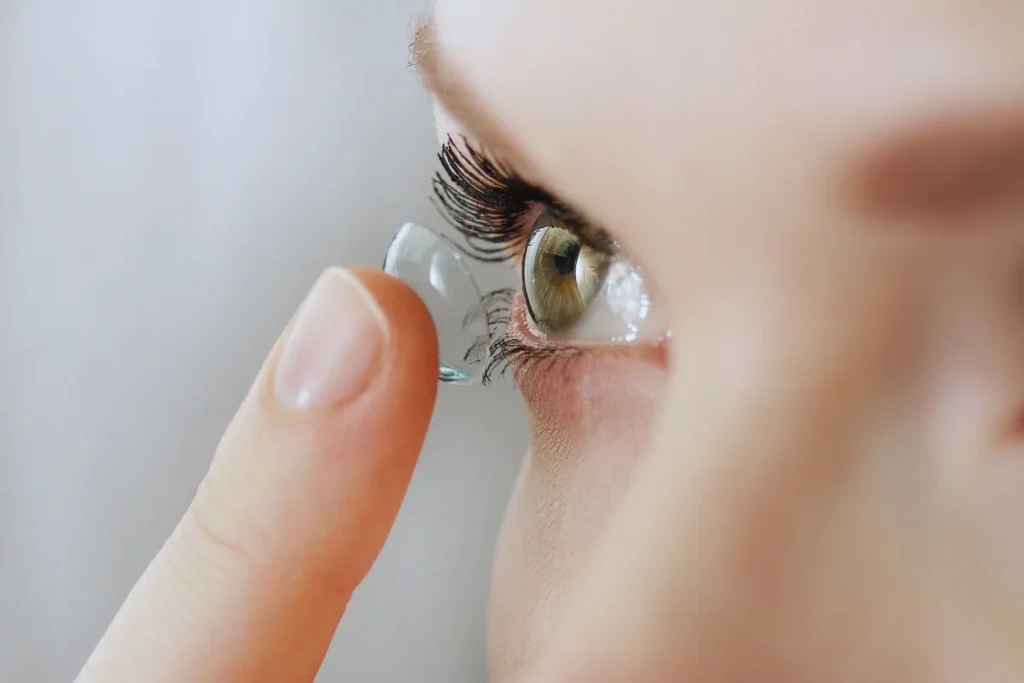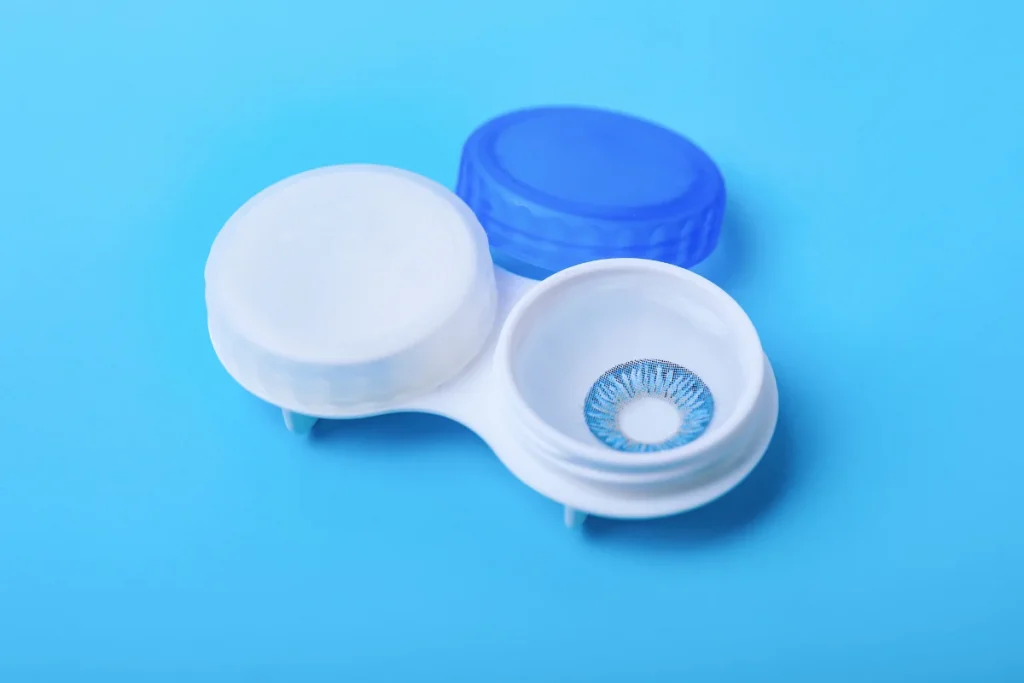Artificial lenses, also known as IOLs in the medical world, are tiny but amazing implants that replace the eye’s natural lens. They are most commonly used during cataract surgery, where the cloudy lens is removed and replaced with a clear one, and instant vision improvement. IOLs are also used in some refractive lens exchange procedures for people who want to be free from glasses or contact lenses.
These lenses are designed to restore clarity, reduce dependence on corrective eyewear, and in many cases, improve quality of life dramatically. They come in several types, made from durable, biocompatible materials that can stay inside the eye for decades without degrading.
One of the most common questions patients ask is simple but important: Will my artificial lens last forever or will I need to replace it one day? It’s a valid concern, especially for those preparing for cataract surgery or considering elective lens replacement for vision correction.
In this article, we will discuss how long artificial lenses last, what can affect it’s lifespan, and how you can protect your vision for the long term. By the end of this, you will know what to expect from your IOL and how to take care of your eyes after surgery.
What Are Artificial Lenses?
Artificial lenses are small, transparent devices that take over the role of your natural lens. Their main job is to bend and focus light correctly onto the retina, allowing for sharp, clear vision.

There are several types, each designed for different vision needs:
- Monofocal lenses focus at a single distance, usually for far vision. Glasses may still be needed for reading or close work.
- Multifocal lenses provide multiple focal points, helping patients see clearly at varying distances and reducing dependence on glasses.
- Toric lenses correct astigmatism, a refractive error caused by an irregularly shaped cornea.
Modern IOLs are usually made from acrylic, silicone, or PMMA (polymethyl methacrylate). These materials are selected for their clarity, strength, and ability to coexist safely within the eye for decades. They are non-reactive, meaning your body will not reject them, and they are manufactured under strict medical regulations to ensure safety and performance.
How Long Do Artificial Lenses Last?
In most cases, once an artificial lens is placed inside the eye, it is expected to remain there for life. Unlike glasses or contact lenses, they are not subject to physical wear and tear from handling or cleaning.
There are several reasons why IOLs are so durable:
- They are made from non-degradable materials that remain stable inside the eye for decades.
- They are protected within the eye, so they are not exposed to dust, dirt, or cleaning agents.
- They do not require routine maintenance or replacement unless there is an unusual complication.
For most people, the performance of the lens is not the limiting factor. Instead, vision changes later in life are usually due to other eye conditions, such as macular degeneration, glaucoma, or diabetic eye disease. These issues affect the eye’s structures rather than the lens itself.
It is also worth noting that a common post-surgery change called posterior capsule opacification (PCO) can cause cloudy vision months or years after surgery. This does not mean the lens has worn out. Instead, it involves clouding of the thin membrane behind the lens. The good news is that PCO can be treated in just a few minutes with a simple laser procedure, restoring clarity without removing the lens.
For more information on issues you might experience with lenses, check out our detailed guide on Common Contact Lens Problems. It’s a helpful resource to understand potential challenges and how to manage them, alongside knowing how long artificial lenses last.
Factors That Can Affect the Lifespan of Artificial Lenses
While IOLs are intended to last a lifetime, certain factors can influence how well they function over time.

- Overall eye health
Conditions such as retinal disease, uncontrolled glaucoma, or severe diabetic eye damage can impact vision even when the lens is perfectly intact. - Post-surgical complications
Problems such as inflammation, infection, or lens dislocation can occur in rare cases. - Posterior capsule opacification (PCO)
This common side effect is often mistaken for lens failure, but it is simply clouding of the capsule holding the lens. It is easily treatable. - Surgical precision
The skill of the surgeon matters. A properly placed lens is less likely to shift or cause visual disturbances over time. - Eye injuries
Trauma to the eye can damage or dislodge the lens, though such injuries are uncommon. - Elective upgrades
Some patients choose to replace their original lens years later to take advantage of newer technology that offers better vision quality.
Signs You Might Need an Artificial Lens Replacement
Most patients will never need to replace their artificial lens, but in rare cases, symptoms may suggest a problem that requires further evaluation.
- Blurry or cloudy vision that does not improve with glasses may indicate PCO or another eye condition.
- Double vision or distortion could be a sign of lens dislocation.
- Ongoing eye pain or inflammation is a red flag that should be addressed promptly.
- Sudden flashes of light or loss of peripheral vision could point to retinal issues rather than the lens, but still require immediate attention.
It is important to remember that many vision changes after cataract surgery are caused by treatable conditions that do not require replacing the lens.
Can Artificial Lenses Be Replaced?
Yes, artificial lenses can be replaced, but the procedure is not performed often. Lens exchange surgery is typically more complex than the original cataract operation.
Reasons for replacement include:
- Incorrect lens power chosen during the first surgery
- Physical damage to the lens
- Lens displacement from its original position
- Patient choice to upgrade to a newer lens type
Although lens replacement can restore vision in certain cases, it carries risks such as infection, retinal detachment, and changes in intraocular pressure. The decision should always be made in consultation with a trusted ophthalmologist who can weigh the potential benefits against the risks.
Caring for Your Eyes After Lens Implant Surgery
Taking good care of your eyes after surgery is one of the best ways to ensure your IOL lasts for decades without issues.
- Follow your surgeon’s instructions regarding medications, activity limits, and follow-up appointments.
- Schedule regular eye exams to detect any issues early.
- Manage chronic conditions like diabetes and high blood pressure, which can damage your eyes over time.
- Wear sunglasses with UV protection to protect both your eyes and your lens from sun damage.
- Avoid situations that risk eye injury, and wear protective eyewear when necessary.
With these simple habits, most patients can maintain healthy vision for many years after lens implantation.
For a deeper understanding of lens measurements and how they affect vision, check out our detailed guide on What is a Diopter Lens. It explains the basics of diopters and their role in lens prescriptions.
Conclusion
For the vast majority of patients, artificial lenses are a lifelong solution. They do not wear out or break down, and most vision problems that develop later are related to other parts of the eye rather than the lens itself.
The best way to protect your results is to care for your eyes, attend regular check-ups, and seek prompt treatment for any vision changes. With proper care, you can enjoy clear, sharp vision for decades after surgery.
Frequently Asked Questions
Do artificial lenses ever need to be replaced?
Rarely. They are designed to last a lifetime, with replacement only needed in exceptional circumstances.
Can artificial lenses get cloudy?
The lens does not get cloudy, but the membrane holding it can develop PCO, which is easily corrected with a quick laser treatment.
Are there different lifespans for different lens types?
All modern lens types are extremely durable. The differences lie in how they correct vision, not in how long they last.
What is the most durable lens material?
Acrylic and silicone lenses are the most common and highly durable materials used today.


